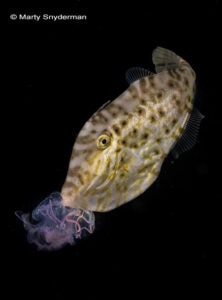Text and images by Atlantis Photography Ambassador Marty Snyderman
The fish pictured here can be seen in rubble zones when diving from the Atlantis resorts in both Puerto Galera and Dumaguete. While the eagle-eyed dive guides at the resorts know where to look and how to find one of these bottom dwelling marvels, many divers when seeing one for the first time, mistake it as being a type of jawfish.

To further complicate things, this fish is known by at least six common names: convict blenny (most popular common name), convict goby, engineer blenny, false catfish, zebra blenny, and engineer goby. And wouldn’t you just know it, the fish is not a blenny, catfish, or goby. It is one of two species in the fish family named Pholidichthyidae. Such is life for fish fanatics who want to be correct when identifying fishes!
Now that you know a little about who this fish is and isn’t, let’s dive into its fascinating natural history.
With a long, slender body shaped somewhat liked those of moray eels, convict blennies live in burrows close to nearshore reefs where the seafloor is comprised of coarse sand and rubble.
Adult convict blennies, like the one pictured above, grow to a length of slightly longer than 13 inches (33 cm). Spending the majority of their time in the recesses of the numerous tunnels in their burrow, adults live secretive lives. But daytime observations of the adults at the mouth of their burrow allow us to understand why they are candidates for a “Good Housekeeping Award” as they maintain their burrow by continuously clearing out mouthfuls of sand, coral rubble, and other debris that total up to 6.6 pounds (1 km) per day.
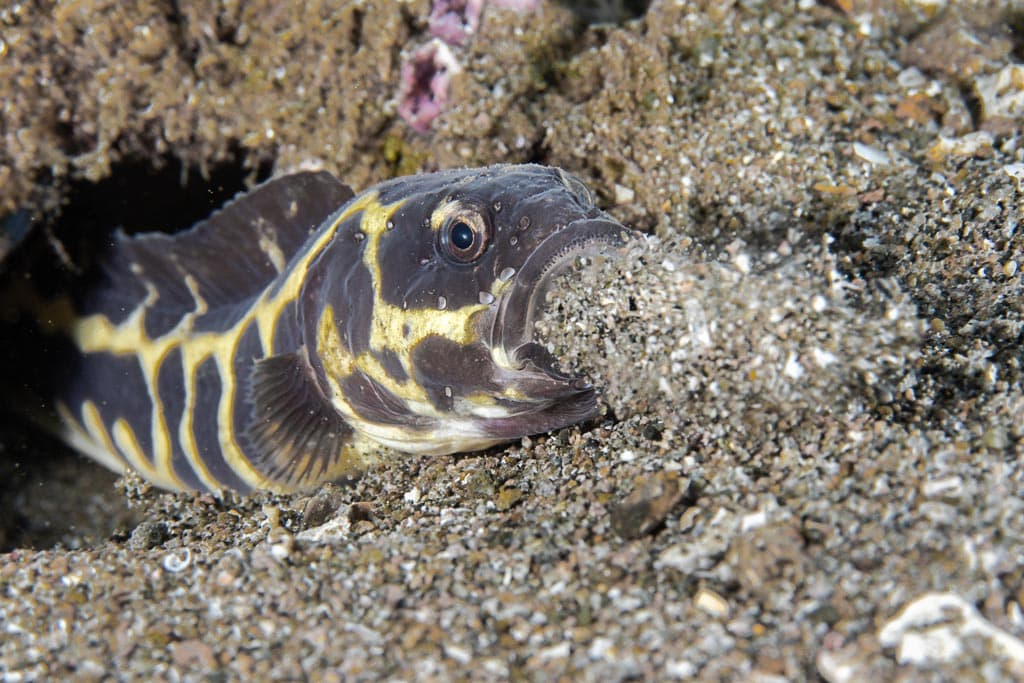
The ejected matter comes from the complex maze of tunnels that create up to 20 feet (6 m) of living space in the burrow. After “spitting out” whatever it brings to the burrow opening, an adult is quick to withdraw. With a little luck, a patient diver will sometimes have the opportunity to see repeated (although short-lived) looks at an adult that is hard at work maintaining its burrow. The combination of the appearance of an adult convict blenny, their strong “house-keeping ethic”, and fact that they live in a burrow is what causes many first-time observers to mistake convict blennies for jawfishes like this yellowbarred jawfish.

The lifestyle of the one-inch to three-inches long juvenile convict blennies is considerably different than that of the adults.

With a deep black body and long, white stripe on the top, the juveniles bear strong resemblance to striped catfish. Both juvenile convict blennies and striped catfish gather in large groups. However, juvenile convict blennies usually appear to be gathering in loose aggregations, while striped catfish tend to gather in tighter, more well-coordinated schools that often appear to fluidly “roll” across the sea floor. school of striped catfish
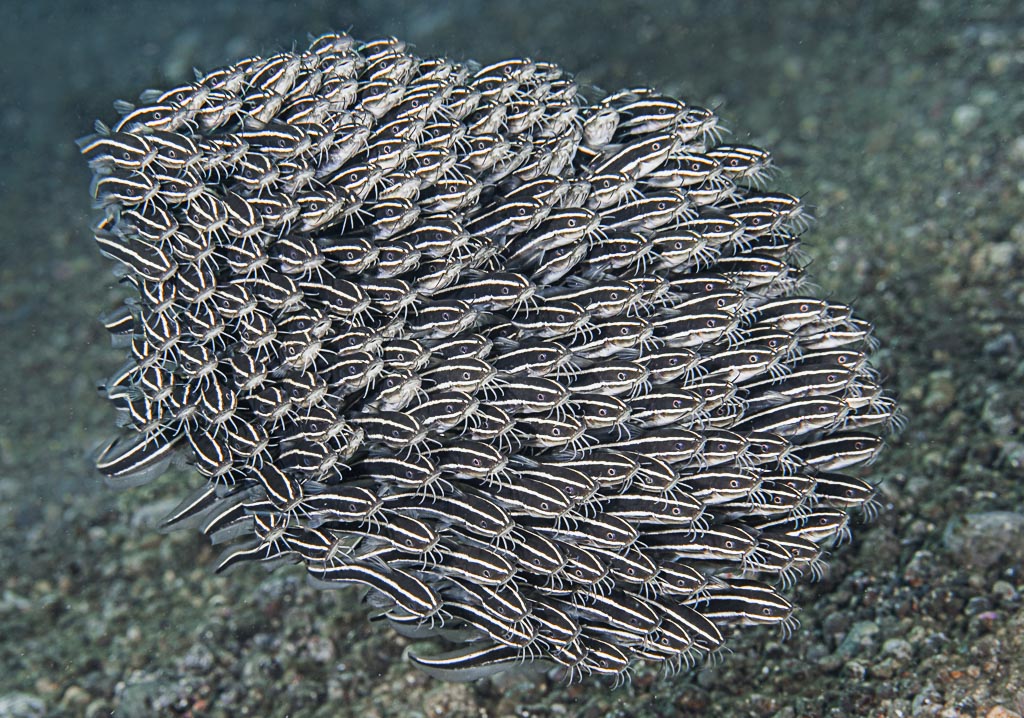
While adult convict blennies somehow manage to flourish without ever leaving their burrow to feed, aggregations of juveniles leave their home during the day and swim farther than 50 yards (45.7 m) away while searching for plankton to feed on. In a fascinating and rare behavior of juvenile fishes, in the late afternoon the young swim back to their home burrow and enter the opening en masse.
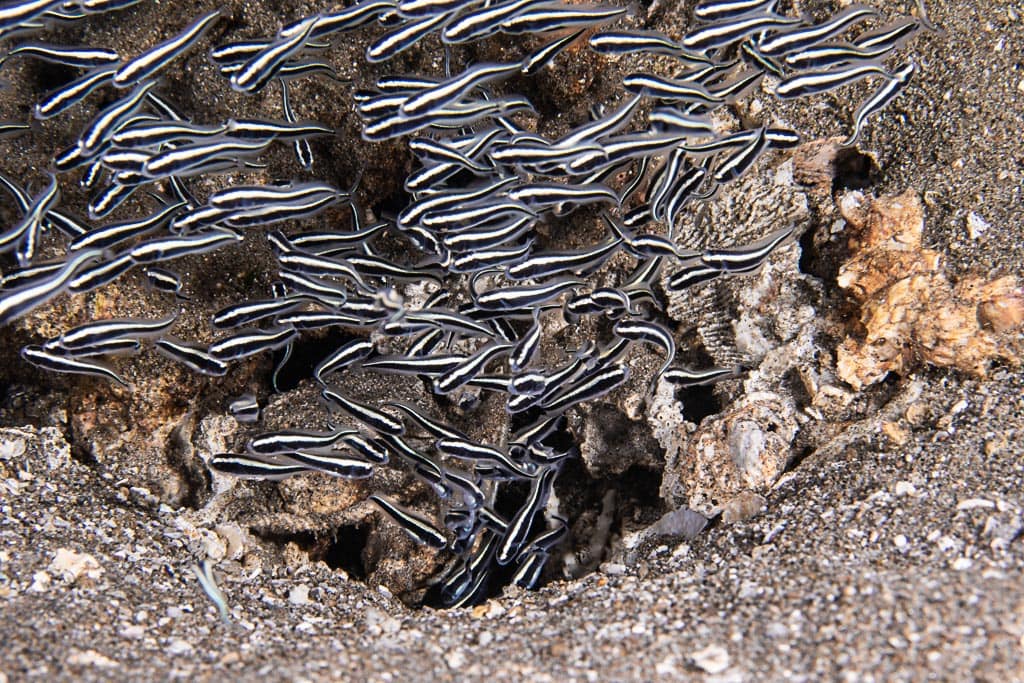
Throughout the night, juveniles use thin threads of mucus to hang by their mouth from the roofs in their burrow. However, theirs is not what you might think of as a peaceful sleep as stomach content analysis reveals that the adult in the burrow is believed to feed on the sleeping juveniles. Not exactly the parental care one dreams about!
What, if anything else, adults feed on remains unknown.
It is believed that only one adult inhabits a burrow. Exactly when and how convict blennies reproduce is another mystery surrounding this fascinating fish.
In the accompanying photograph, you can see considerable size discrepancy between an adult and juvenile convict blenny as this straggling juvenile appeared to be the last one to enter its burrow before nightfall. Well, one juvenile had to go last!
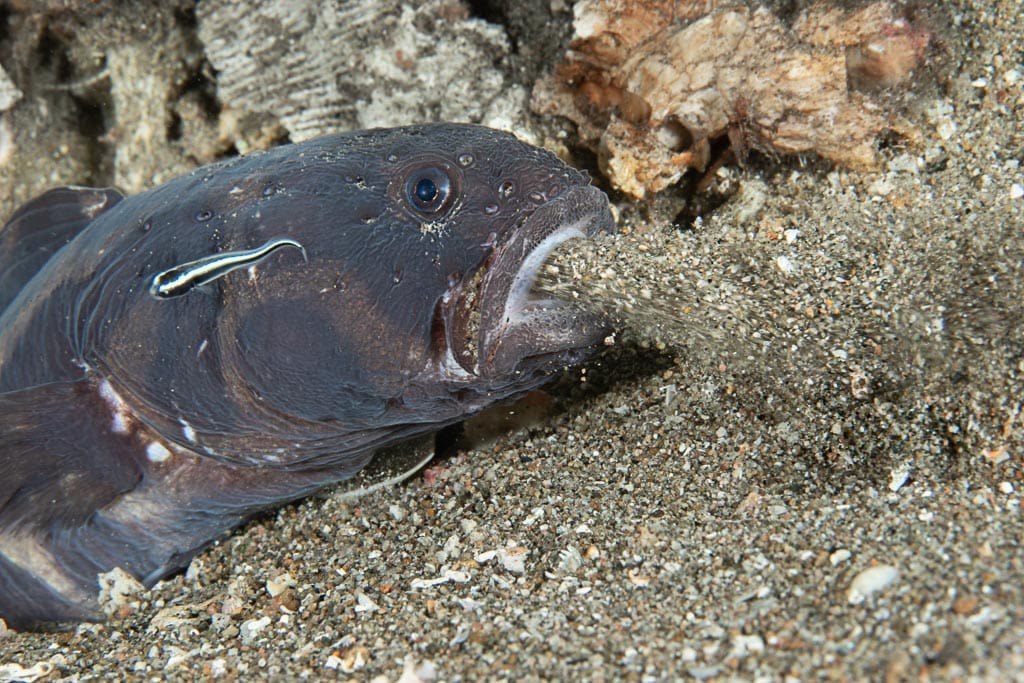
If you are fortunate enough to see an adult convict blenny at work maintaining its burrow, you have a good chance to get a close look and perhaps a very nice photograph. To maximize your encounter, be sure to minimize any movement. As always, when observing wary marine animals, the importance of good buoyancy control cannot be overstated.
First studied by the highly acclaimed marine biologist, Dr. Eugenie Clark, the convict blenny is featured in several films produced by Atlantis ImageMakers Michele and Howard Hall.






